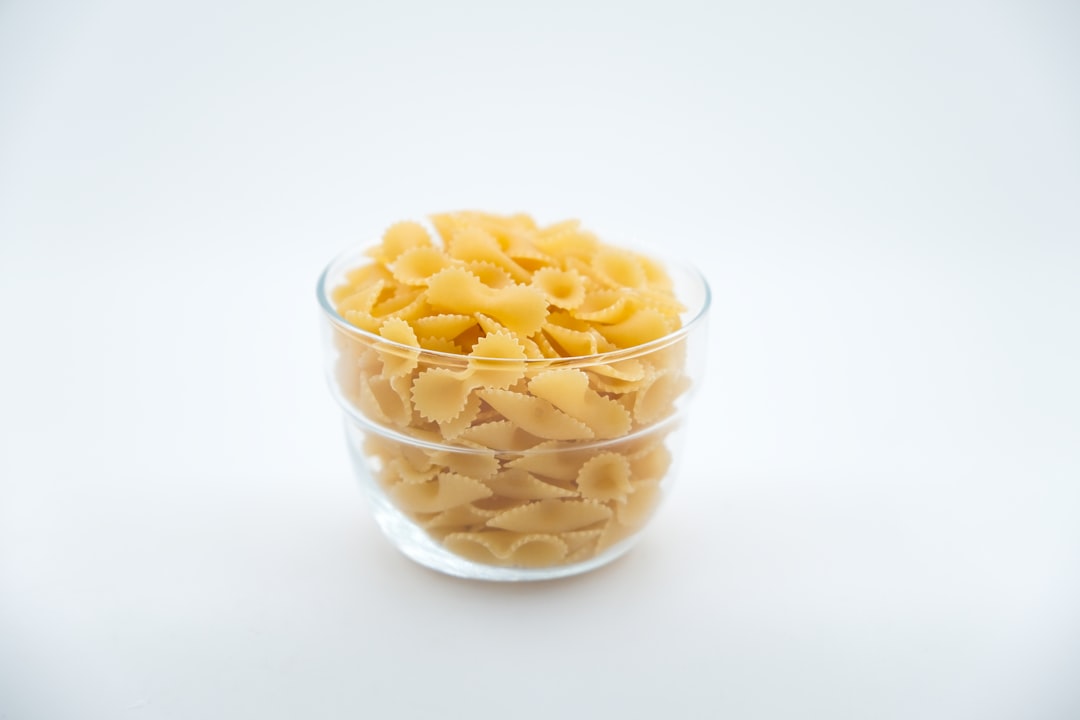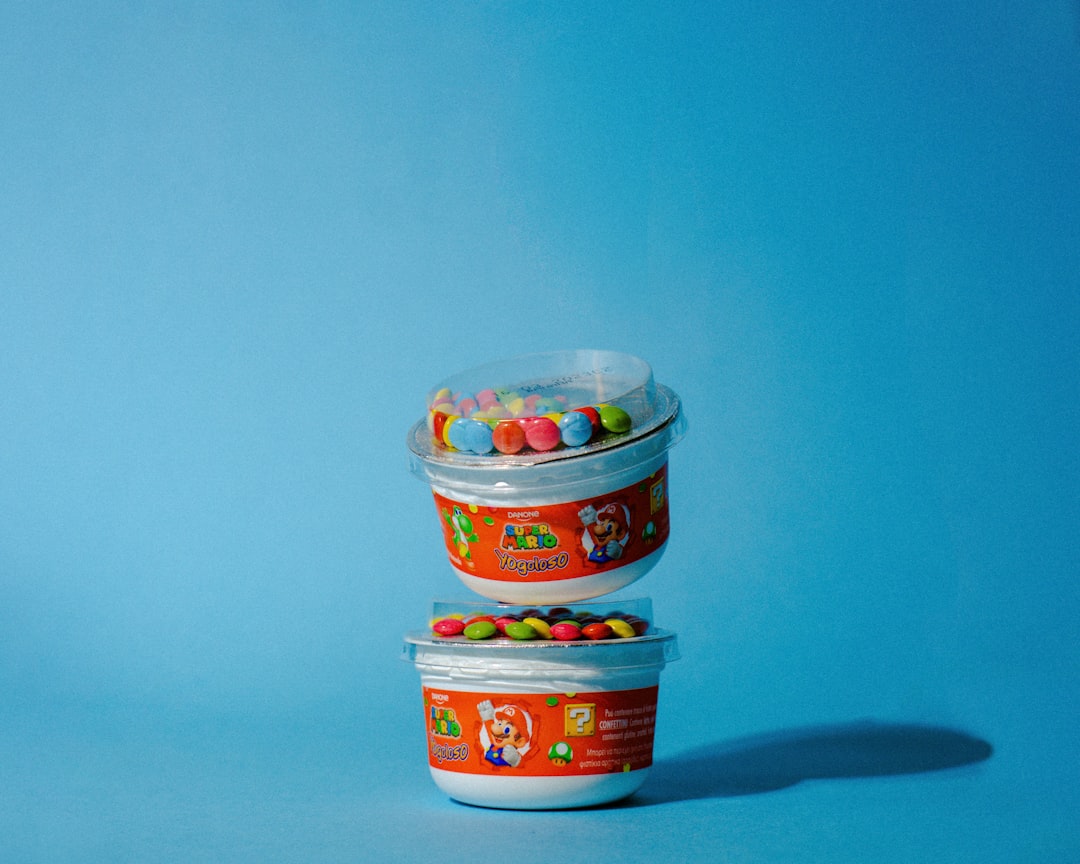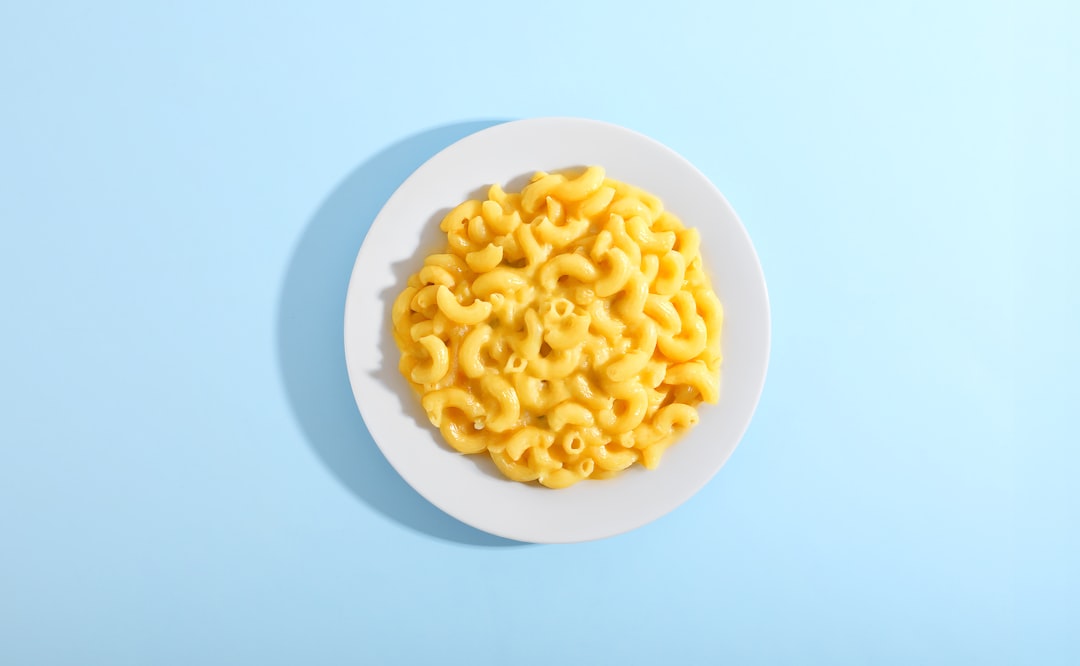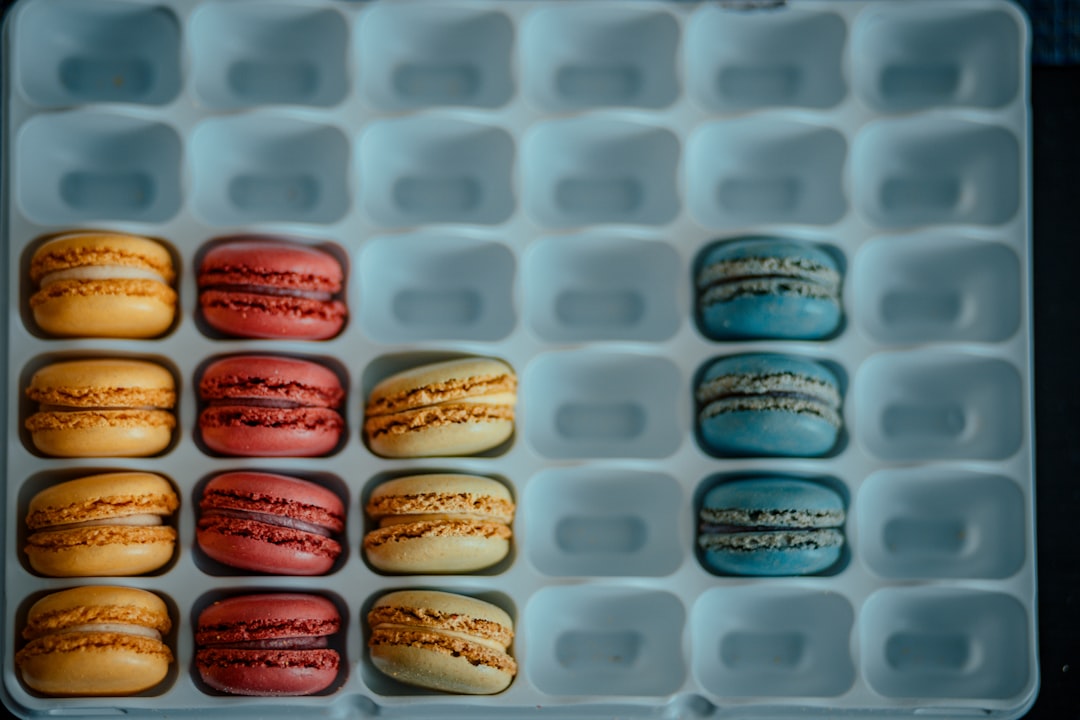

Engage prospects with a scan and streamline customer engagement with FREE QR code marketing tools by Sona – no strings attached!
Create a Free QR CodeFree consultation

No commitment

Engage prospects with a scan and streamline customer engagement with FREE QR code marketing tools by Sona – no strings attached!
Create a Free QR CodeFree consultation

No commitment
In today's competitive pasta market, macaroni brands need to innovate beyond flavor and price to stand out on crowded shelves. Packaging is no longer just a protective shell or branding space; it is a direct line to digital engagement that can reveal who your buyers are, what they care about, and how to serve them better. QR codes turn every box into a gateway to deeper brand experiences, such as recipes, chef tips, cooking timers, nutrition lookups, and sustainability storytelling that shape both perception and purchase behavior.
By embedding QR codes on-pack and across your marketing ecosystem, as seen in Barilla QR codes, brands can replace costly printed collateral with dynamic content, capture first-party data ethically, and retarget interested shoppers with high relevance. Consumers get immediate value, while your brand gains actionable insights about preferences, locations, and engagement patterns that drive loyalty, repeat purchase, and increased lifetime value.
With the right platform, such as Sona QR for code management and Sona.com for attribution, each scan becomes a measurable signal you can act on. You control the full journey: from attention in the aisle to inspiration in the kitchen, to follow-up offers that bring shoppers back to the shelf or your online store.

QR codes connect macaroni packaging to the digital world and help brands increase loyalty, gather customer feedback, and simplify information delivery. Instead of relying on analog tactics like coupons cut from circulars or reply cards tucked into cartons, you can invite shoppers to scan and get immediate value. That one scan can trigger a cooking tutorial in the moment of need, a personalized nutrition breakdown, or a loyalty enrollment flow that eliminates friction. The result is more engagement, cleaner data, and better marketing efficiency.
Traditional tools like printed booklets, paper coupons, or static displays often fail to convert curious shoppers into known contacts. QR codes remove the barrier. They let you deliver content that updates in real time, so you can swap seasonal recipes, highlight new certifications, or push timely discounts without reprinting anything. Because the destination can be dynamic, you can A/B test messages, tailor content by region, and extend the shelf life of each campaign.
With the right infrastructure, every package touchpoint feeds your digital ecosystem. Whether the consumer is shopping in-store, cooking at home, or posting a photo of their dish on social media, QR codes keep the relationship going and give you the data to serve them better at every stage.

Macaroni brands need to connect at the shelf, communicate nutrition clearly, and earn trust with transparent sourcing and sustainability practices. The challenge is that many engaged shoppers remain anonymous. Without a mechanism to prompt action and capture consented data, interest goes unmeasured and unaddressed. QR codes fix this by creating a simple bridge from physical packaging to useful, personalized digital experiences.
QR codes are especially valuable because they work instantly without requiring an app download. They let you update content after printing, so your packaging stays relevant even as recipes, formulations, or sustainability claims evolve. They are also easy to track; you can see which products, regions, or stores spark the most scans, then use those insights to refine merchandising, creative, and promotional timing.
For macaroni brands, physical materials like back-of-pack panels, shelf talkers, shipper displays, in-store sampling stations, freestanding inserts, and coupons are common. QR codes lift the performance of these assets by capturing engagement in real time and connecting each moment to a next step you control.

Different goals call for different QR formats and destinations. Matching the format to the task ensures a smoother user experience and more accurate measurement. Macaroni brands typically benefit from formats that route to web content, collect feedback, or trigger communication with minimal friction.
Static codes can be appropriate when the destination will never change, such as a permanent allergen policy or a product page you do not plan to update. Most modernization efforts benefit from dynamic QR codes, which enable tracking, A/B testing, destination updates, and audience segmentation without reprinting packaging or signage.
With Sona QR, you can generate static and dynamic formats, brand your codes, and manage destinations from one dashboard. Dynamic codes are the default choice for campaigns that require measurement, segmentation, or routine content updates.

QR codes work best when they meet consumers where they already pay attention. For macaroni brands, that includes packaging at home, shelves in-store, direct mail, and event activations. Each placement can be tuned with context-appropriate messaging and a next step that feels natural.
The opportunity is to redesign the journey from first scan to repeat purchase. When shoppers scan in the store, they should get quick decision support like nutritional filters, gluten information, or a one-minute recipe video. When they scan at home, they need useful cooking guidance, time-saving hacks, and easy reorder links. When they scan at events, they should land on sampling feedback forms or instant coupon delivery.
By aligning placement and purpose, you turn once-invisible moments into measurable growth levers. Over time, scan and conversion data will reveal the highest performing placements so you can double down on what works.

Macaroni buyers want confidence at the shelf and inspiration in the kitchen. QR codes can deliver both, while giving your brand the data to understand which messages drive response. Choosing a small set of high-impact use cases is the fastest way to see results and learn what your audience values.
When designing these use cases, think about intent. Shoppers who scan in-store might be comparing ingredients or looking for reassurance about allergens. Scanners at home likely seek a recipe or cooking technique. Those at events may be open to sharing feedback or joining your community. Tailor destinations accordingly and keep paths short.
Each use case can be optimized with dynamic content and A/B tests. For example, test whether a timed cooking video or a printable recipe card drives higher engagement and repeat scans. Over time, you will identify the formats and content that lift sales most reliably.
Each scan provides data on who engages, where, and why, which helps solve the problem of high-intent but anonymous prospects. When you deploy multiple QR codes across products, regions, and channels, you can segment audiences automatically, then deliver highly relevant follow-ups that respect user preferences.
A practical approach is to create unique codes for major segments. Families might receive budget-friendly meal plans and lunchbox tips. Foodies could get chef collaborations and limited-edition flavors. Sustainability-focused shoppers might see sourcing videos and refill initiatives. Tag each scan by product line, placement, and creative, then sync the data to your CRM.
With Sona QR, you can tag each code, unify events across products and channels, and build audiences in real time. This lets you retarget based on real behavior rather than assumptions, improving conversion efficiency and lifetime value.
Providing a consistent brand experience across channels is challenging, especially when much of your presence lives on shelves and kitchen counters. QR codes unify the journey by making offline moments clickable and measurable, then feeding the data back into your marketing systems.
The key is to map which codes live where and what action each is meant to drive. For example, packaging codes focus on cooking and nutrition, while retail codes push coupons or sampling feedback. Direct mailers can focus on discovery bundles or subscribe-and-save offers. Event codes collect leads and deliver exclusive content.
Centralized management with Sona QR reduces fragmentation, enabling you to monitor performance across placements and sync engagement data to your CRM and ad platforms. Over time, a connected offline-to-online funnel will make your marketing more predictable and efficient.
Start by articulating the business outcome you want. Do you want to grow recipe engagement, increase loyalty sign-ups, or drive trial of a new macaroni cut or formulation? Clear objectives translate to better creative, placements, and measurement. If your goal is conversion at the shelf, prioritize instant decision support like nutrition filters and a limited-time coupon. If your goal is post-purchase engagement, prioritize recipes and cooking tips that encourage repeat usage.
Tie each objective to a measurable KPI. For awareness, it could be unique scans per thousand boxes. For engagement, it could be time on page, number of recipe interactions, or email opt-ins. For conversion, it could be redemptions, reorders, or cart additions. Document these targets before you design the codes so your team knows what success looks like.
Dynamic QR codes are best for marketing campaigns because they let you edit destinations after printing, segment traffic by product or region, and track performance in detail. Static codes are better for evergreen content that never changes, such as a product guarantee or a permanent allergen statement. When in doubt, choose dynamic so you can test and optimize without incurring reprint costs.
Consider the destination type as well. If you need form fills or feedback collection, link to a short, mobile-friendly form. If you are driving B2B contact at a trade show, a vCard makes contact saving effortless. For consumer enrollment, an SMS or email opt-in link lowers friction and keeps the flow native to the device.
Branded QR codes with a clear frame and strong contrast improve scan rates. Add your logo to the code center, and surround the code with a border that signals interactivity. Use concise, benefit-driven CTAs like "Scan for 3 chef-approved recipes" or "Scan to check ingredients". Place the code in a scannable size and location, avoiding curved surfaces or seams.
Testing is non-negotiable. Validate scannability on different devices and in different lighting, angles, and distances. Test on glossy and matte finishes, and check print quality on various substrates. Include a short fallback URL near the code for shoppers with older phones. If you are printing on film or foil, ensure the code has a high enough contrast to remain readable under store lighting.
Placement should match user intent and environment. On packaging, back-of-pack near cooking instructions often performs well because it aligns with a clear task. For in-store signage, eye-level shelf talkers or endcap displays can prompt consideration. For mailers, position the code above the fold with a visually compelling offer. At events, use tabletop stands and badge stickers to bring the code into easy reach.
Context informs creative. In aisle, emphasize decision support and offers. At home, emphasize cooking convenience and family-friendly ideas. At events, emphasize sampling feedback and exclusive content. Ensure the code is large enough to scan from natural distances and not blocked by fixtures or curves.
Once live, monitor scan activity by product, region, and placement. Look for spikes and dips tied to promotions, weather, seasonality, or media. Analyze downstream behavior like recipe interactions, opt-ins, or add-to-cart events. Then optimize creative, CTAs, and destinations using what the data reveals. If endcap codes outperform shelf talkers, shift budget and inventory accordingly.
Feed scan data into your CRM and ad platforms to automate follow-up. Trigger emails with relevant recipes, SMS with weekly shopping lists, or ads highlighting complementary products. Regularly review benchmarks and test variables like CTA language, code size, and content types. With Sona QR, dashboards make it easy to visualize performance and run controlled experiments that increase ROI.
QR code value is maximized by tying scan data to business KPIs. Tracking should extend beyond the scan to measure engagement quality and commercial impact. This means connecting scans to website behavior, opt-ins, coupon redemptions, e-commerce orders, and retailer sales data where available. The more you tie together, the clearer your ROI picture becomes.
Start with the basics: scans by time, location, device, and code. Layer on UTM parameters to see traffic sources and campaign impact inside your analytics platform. Then attribute downstream events like page views, time on page, video completions, and conversions back to the originating QR code. If you sell online, connect scans to carts, orders, and repeat purchases. If you sell primarily via retail, tie codes to coupon redemptions, loyalty IDs, or in-store promotions to approximate revenue impact and improve offline attribution.
Sona QR and Sona.com streamline this process by unifying scan tracking, identity resolution, and multi-touch attribution. You get real-time reports on which assets drive engagement and revenue, so you can optimize spend and scale the initiatives that work.
As pasta marketing evolves, QR codes offer a powerful way to build loyalty, boost engagement, and deliver the tailored experiences consumers expect. The most effective deployments focus on clarity, value, and measurability. Keep your CTAs crisp, your content helpful, and your data connected to the tools that power your lifecycle marketing.
Choose a few standout moments to encourage scanning. For example, add a code to a loyalty sticker on the box that reveals this week’s family dinner plan, or print a code inside the box that unlocks a surprise recipe after purchase. Over time, these small, repeatable moments compound into stronger relationships and higher lifetime value.
Start creating QR codes for free. Set up your codes in minutes, tag them by product and placement, and start learning which experiences your macaroni fans love most. Over time, pair Sona QR’s campaign management with Sona.com’s attribution to connect scans to sales and scale what works.
QR codes have transformed the macaroni brands industry from simple packaging into interactive, measurable growth drivers. By integrating QR codes, brands can not only enhance customer engagement but also provide instant access to recipes, nutritional information, and exclusive promotions—turning every package into a dynamic marketing channel. Imagine knowing exactly which packaging designs and campaigns resonate most with your audience—and being able to optimize them instantly.
With Sona QR, macaroni brands gain the power to create dynamic, trackable QR codes that update in real time without the need to reprint packaging. This means you can connect every scan directly to customer acquisition, boost brand loyalty, and capture valuable data that drives smarter marketing decisions and higher sales. Start for free with Sona QR today and transform your packaging into a powerful tool for growth and customer connection.
Macaroni brands can use QR codes on packaging and marketing to provide recipes, cooking tips, nutrition lookups, and sustainability stories, which increase engagement, capture first-party data, and enable targeted follow-ups.
Dynamic QR codes allow brands to update content after printing, track scans in detail, segment audiences, and run A/B tests without reprinting packaging, making them ideal for marketing campaigns.
Content can include recipe libraries, nutritional information with allergen and gluten alerts, sustainability details, loyalty program enrollment, cooking tutorials, and feedback forms.
QR codes can link to detailed sustainability storytelling such as batch-level traceability, wheat origin, water footprint, packaging recyclability, and third-party audits to enhance brand perception among environmentally conscious buyers.
QR codes perform best on packaging near cooking instructions, on retail shelf talkers and endcaps, in direct mail above the fold, at events on tabletop stands, and within social and digital media for seamless user experience.
Brands should track scan volume, unique scans per thousand boxes, time spent on content, recipe interactions, loyalty sign-ups, coupon redemptions, and attributed revenue to measure campaign success.
By generating unique QR codes for different customer segments and campaign contexts, brands can capture scan data, segment audiences automatically, sync with CRM systems, and deliver personalized follow-ups via email, SMS, or paid media.
QR codes create a bridge from physical packaging to dynamic digital experiences, enabling brands to measure engagement, update content in real time, and unify offline and online marketing channels for better attribution.
Brands should create branded QR codes with clear frames, strong contrast, concise calls to action, place codes on flat, accessible surfaces away from seams, and test scannability across devices, lighting, and packaging materials.
Common formats include web links for recipes and nutrition, vCards for B2B contacts, mobile-friendly forms for feedback or contests, SMS and email opt-ins for loyalty, and app download links for repeat engagement.
Use Sona QR's trackable codes to improve customer acquisition and engagement today.
Create Your FREE Trackable QR Code in SecondsJoin results-focused teams combining Sona Platform automation with advanced Google Ads strategies to scale lead generation

Connect your existing CRM

Free Account Enrichment

No setup fees
No commitment required

Free consultation

Get a custom Google Ads roadmap for your business






Launch campaigns that generate qualified leads in 30 days or less.
